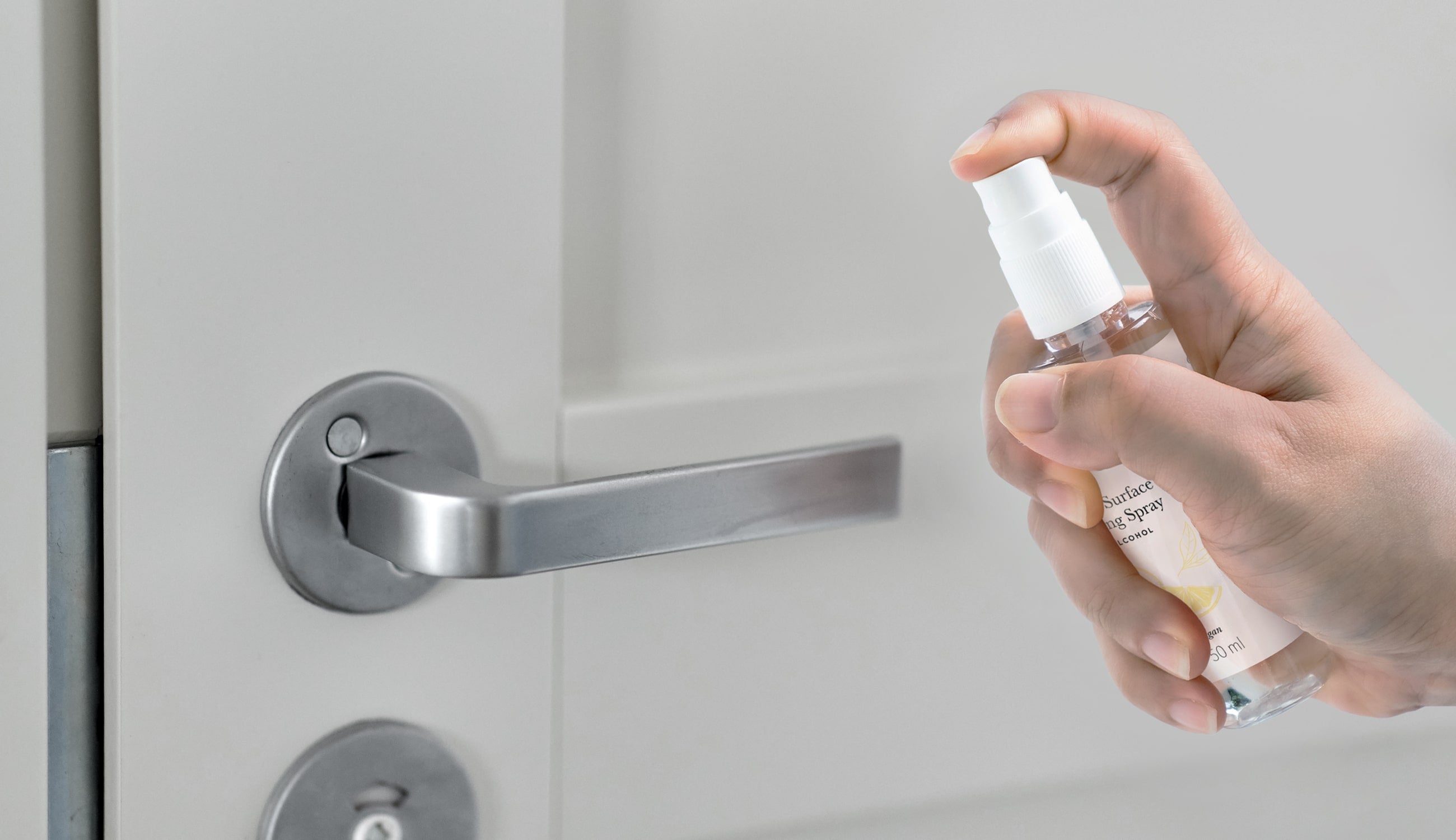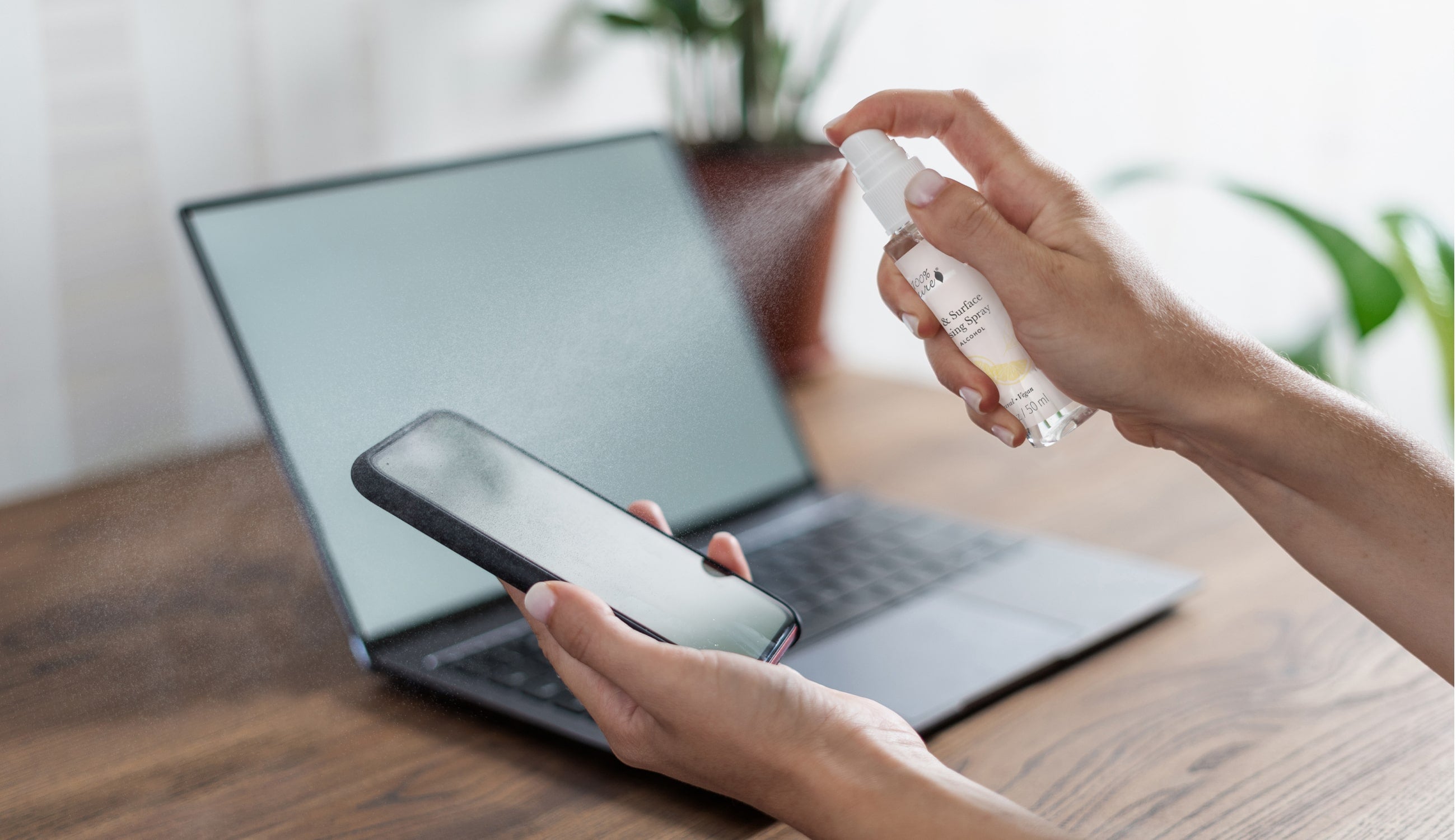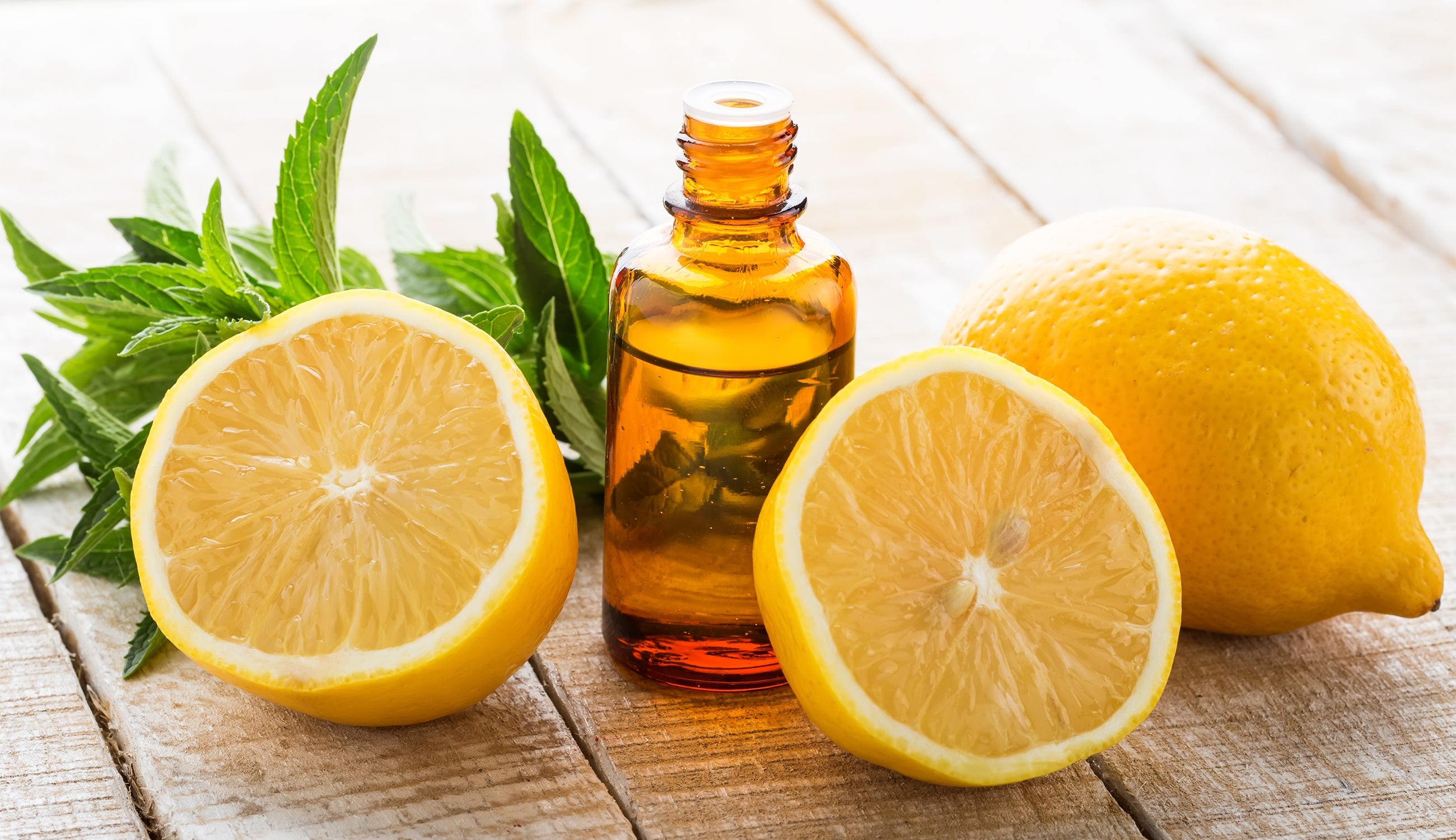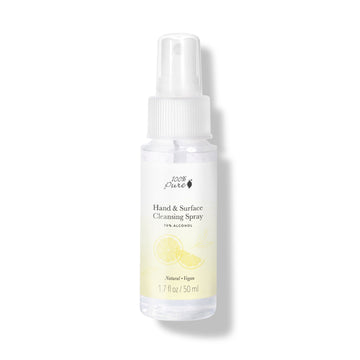Identifying naturally effective alcohols, acids, and oils
Posted on June 10, 2020 Written by: 100% PURE ®
From washing our hands to wiping down household surfaces, our cleaning products work to keep our bodies and living spaces clean. Regular household cleaning products work for removing the dirt and grime – but some won’t actually kill the germs that make us sick. So how can we be sure our store-bought or homemade products actually fend off microbes?
The simple answer: disinfectants. What’s the difference between cleaning and disinfecting? Let’s walk through what defines a disinfectant, why to consider them in your household cleaning products, and how to identify the best natural disinfectants.
According to the American Cleaning Institute, a disinfectant is a product that contains antimicrobial ingredients. These ingredients kill microbes, which are microorganisms that can cause a variety of diseases; think fungal skin infections, bacterial food poisoning, and viral colds or flus.
The caveat is that the surfaces you disinfect must be free of “heavy soil”. For a disinfectant to be effective, these surfaces must be cleared of dirt, dust, grime, food particles, and other substances that make a surface dirty.
It’s important to note that a disinfectant, in and of itself, doesn’t clean dirty spots or physically remove germs from a surface. To disinfect only means that you’re killing germs to help prevent illness from spreading.
A disinfectant cleaner, on the other hand, has both antimicrobial ingredients and cleaning ingredients. Using this cleaner means you can physically remove soil and germs from your living areas, while killing germs that may be left after cleaning.
A subset of antimicrobial cleaners are antibacterial cleaners. These products contain cleaning ingredients that help physically remove germs. However, their ability to kill bacteria doesn’t extend to viruses or fungi.
That’s why an ideal cleaner should contain ingredients that help kill a variety of microorganisms, not just bacteria. You can safely use a variety of antimicrobial ingredients that will disinfect the full spectrum of microbes on your surfaces, including bacteria, viruses, and fungi.

Many conventional household cleaners use ingredients that can irritate the skin, eyes, nose, and throat. In extreme cases, complaints mention headaches or nausea resulting from cleaning fumes. These vapors might also affect you more harshly if you suffer from respiratory illnesses.
While studies are being conducted on how these chemicals affect you if you have preexisting asthma or respiratory conditions, the American Lung Association cites that “past studies link exposure to chemicals from cleaning supplies to occupational asthma and other respiratory illnesses.” In general, strong fragrances or perfumes may trigger or irritate asthma as well.
According to the Cleveland Clinic, all-purpose cleaners contain ingredients like “ammonia, ethylene glycol monobutyl acetate, sodium hypochlorite and/or trisodium phosphate.” Since these ingredients have the potential for skin irritation, it’s recommended that you use gloves and keep good air circulation while using all-purpose cleaners.
Chlorine bleach, a popular household cleaning agent, can cause irritation to the skin, eyes, nose, and throat if you inhale its vapors or if it comes in contact with your skin. Dermatitis, a contact form of skin inflammation, may also occur if bleach comes in contact with your skin.
Lye, another common cleaning ingredient, can burn the skin and eyes. That’s why protective goggles and gloves are recommended safety measures when using lye-heavy products.
Overwhelmed by the risks associated with household cleaners? This is where natural disinfectant cleaners come into play. A natural disinfectant cleaner – homemade or otherwise – disinfects our home while reducing many of the risks we can encounter while using conventional household cleaners. Not to mention, they’re often more cost-effective and less environmentally harmful. Great for the planet and our health!

Not all natural ingredients are equally effective against all microbes. If you opt for a cleaning product with only antibacterial properties, you’ll partially neglect the fungi and viruses that can cause skin infections and viral colds. Included on this list are essential oils, citric acid, vinegar, and other natural byproducts that can help disinfect your home.
Ethyl Alcohol
In general, alcohols disinfect against many forms of bacteria, fungi, and viruses. At 100% PURE™, we prefer ethyl alcohol instead of isopropyl alcohol. Isopropyl alcohol is made from petroleum, a non-renewable resource and environmentally unsustainable option. Ethyl alcohol comes instead from the fermentation, distillation, and filtering of sugars or grains.
Hydrogen Peroxide
Hydrogen peroxide has the chemical structure of water with an extra oxygen molecule. In fact, it decomposes into water (H2O) and oxygen. The CDC cites that hydrogen peroxide disinfects against bacteria, yeast, fungi, viruses, and spores.
White Vinegar
Vinegar disinfects against and helps prevent the growth of food-borne bacteria, especially when paired with fresh lemon juice. In combination with baking soda, vinegar disinfects fairly well against household bacteria, though this mixture is not as effective as ethyl alcohol or hydrogen peroxide – and it doesn’t kill Staphylococcus bacteria.
Citric Acid
Citric acid disinfects against bacteria, mold, and mildew. Lemon juice contains 5-8% citric acid, though you can also buy pure citric acid; both are biodegradable. Similar to vinegar, citric acid is better used in combination with other disinfectants.
Lemon Essential Oil
Lemon oil has been shown to have some antibacterial effect against certain strains of bacteria. On its own, it’s likely not as effective as approved disinfectants like alcohols and hydrogen peroxide. It’s best to use lemon essential oil as a complement in your cleaning mixture.
Rosemary Essential Oil
Several studies show that rosemary disinfects against some fungi and bacteria due to its phenolic compounds, which are a class of antioxidants. Like its counterpart, lemon essential oil, it’s best used to enhance the main disinfectants in your cleaner.
Peppermint Essential Oil
Peppermint essential oil mildly disinfects against some bacteria, fungi, and viruses. As with many essential oils, peppermint is not wholly effective against stronger bacteria or viruses. As mentioned, stick with ethyl alcohol, hydrogen peroxide, or vinegar as your main disinfectants!
-
Using a separate disinfectant and household cleaner? Clean first, then disinfect.
-
Try castile soap as a natural cleaning ingredient, which you can use first or combine with your disinfectants.
-
Use a 60-70% ethyl alcohol mixture for household cleaning.
-
Allow a disinfectant 5 minutes to be fully effective.
-
If you don’t mind the taste, use vinegar and fresh lemon juice to cleanse your fruits and veggies of bacteria.
-
Use lemon, rosemary, or peppermint essential oils not only for their antimicrobial properties, but to add scent to your cleaner!
-
Don’t combine vinegar and hydrogen peroxide.
-
Avoid using vinegar on marble or granite.
If you’re interested in using natural ingredients to disinfect your home, you might be wondering how to put it all together. That’s why we’ve got you covered with a DIY disinfectant that covers all your bases!
You’ll need:
-
1 spray bottle
-
3 oz purified or distilled water
-
1.5 cups of 99% ethyl alcohol
-
½ tsp of hydrogen peroxide
-
20 drops of preferred essential oil
Directions:
-
Pour water into your spray bottle
-
Add your hydrogen peroxide, then your ethyl alcohol
-
Add your essential oil
-
Shake thoroughly. After this step, you should be ready to disinfect!
Be sure to patch test this mixture on your surfaces. Alcohol may alter certain plastics, electronics, and unfinished woods. Hydrogen peroxide can discolor fabrics, too. Adjust this recipe depending on how much you need – happy disinfecting!
- Tags: Clean Living, Guides, Shopping Guides
We carefully hand-select products based on strict purity standards, and only recommend products we feel meet this criteria. 100% PURE™ may earn a small commission for products purchased through affiliate links.
The information in this article is for educational use, and not intended to substitute professional medical advice, diagnosis, or treatment and should not be used as such.












